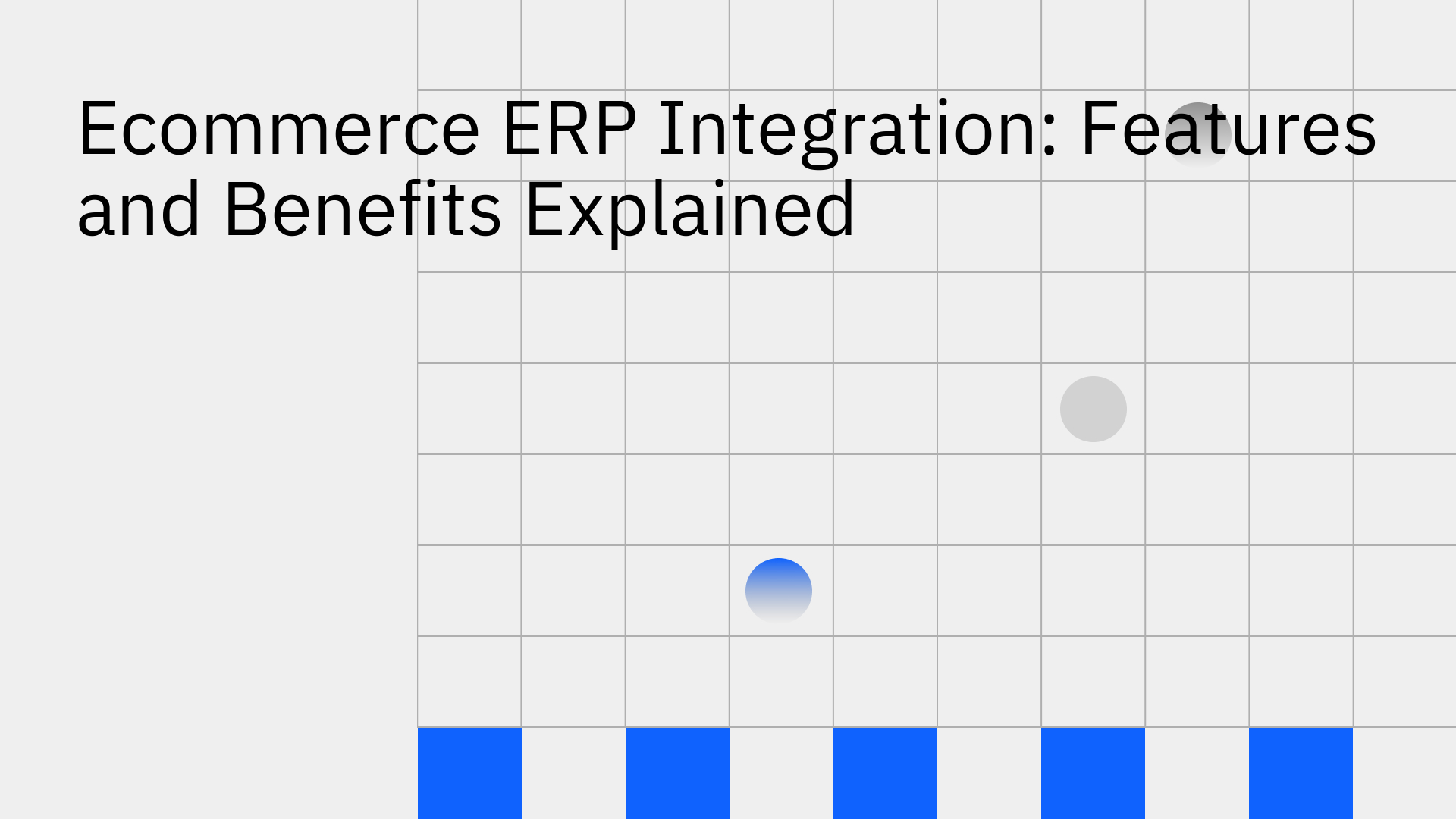
Disconnected operational systems create significant technical debt and inefficiency. Teams managing ecommerce platforms like Shopify and ERPs like NetSuite often struggle with manual data entry, data silos, and process bottlenecks. These issues lead to inventory discrepancies, order fulfillment errors, and a compromised customer experience. The core problem is a lack of reliable, real-time data flow between the systems that drive the business.
For companies scaling their operations, a NetSuite Shopify integration is a solution to this challenge. By creating a seamless, automated connection between your ecommerce storefront and your back-office ERP, you can unify critical business data, eliminate manual processes, and build a resilient operational foundation for growth.
This article explains the technical architecture of a NetSuite and Shopify integration, its essential features, and the operational benefits it delivers.
A NetSuite Shopify integration is the process of connecting your Shopify ecommerce platform with your NetSuite Enterprise Resource Planning (ERP) system. This connection establishes an automated, bi-directional data flow between the two platforms. The primary technical objective is to synchronize critical data objects—such as orders, inventory levels, product information, and customer data—in real-time.
This integration eliminates the need for manual data reconciliation, which is prone to human error and latency. By ensuring data consistency across your operational systems, you can accelerate order fulfillment, maintain accurate inventory across all sales channels, and provide a single source of truth for financial reporting and business intelligence.
A robust integration between NetSuite and Shopify relies on the seamless interaction between the front-end sales environment and the back-end operational hub.
In this architecture, Shopify serves as the customer-facing platform, managing the online storefront, product displays, and the checkout process. NetSuite functions as the central operational system, handling core business processes such as inventory management, order processing, financials, and supply chain logistics.
When a customer places an order on Shopify, a successful integration ensures that order data is instantly and automatically transmitted to NetSuite for fulfillment and inventory adjustment. Conversely, updates made in NetSuite—such as changes in stock levels or product pricing—are reflected on the Shopify store in real-time.
The integration synchronizes data through APIs (Application Programming Interfaces) that allow the two systems to communicate. This ensures that data remains consistent across both platforms. Key data flows include:
There are several technical approaches to connect NetSuite with Shopify, each with distinct trade-offs in terms of reliability, scalability, and maintenance overhead.
A properly implemented integration delivers features that automate and streamline core business operations.
To determine if you need to connect NetSuite with Shopify, evaluate your current operational inefficiencies.
B2B and B2C companies are moving away from manual processes and adopting automated integration to resolve operational challenges. The technical driver for this shift is the need for data integrity and process efficiency at scale.
Manual data transfer between Shopify and NetSuite can lead to shipping delays, inaccurate inventory counts, and frustrated customers. For businesses with complex product catalogs or high transaction volumes, these issues are magnified, directly impacting revenue and brand reputation.
An automated NetSuite Shopify integration addresses these problems by creating a single, reliable system of record. It enforces data consistency and automates the entire order-to-cash lifecycle. This not only reduces human error but also provides the end-to-end visibility required to manage a modern commerce operation effectively [7].
However, not all integration methods are equal. Custom-coded solutions can be expensive to build and maintain, while generic iPaaS tools may not deliver the reliability and real-time performance required. This is why businesses are turning to purpose-built solutions.
Stacksync provides a dedicated, enterprise-ready platform to connect NetSuite with Shopify. It is designed to overcome the limitations of other methods by delivering:
A NetSuite Shopify integration is fundamental for any business seeking to achieve operational excellence. It transforms disconnected processes into a unified, efficient, and scalable system. By automating the flow of data between your ecommerce platform and your ERP, you eliminate manual work, reduce errors, and gain the real-time visibility needed to make strategic decisions.
This integration is more than a technical improvement; it is a strategic asset that empowers your team to focus on growth and customer satisfaction instead of managing operational friction.
Q1. How does NetSuite integrate with Shopify?
NetSuite integrates with Shopify via APIs. This can be accomplished through custom development, a generic iPaaS platform, or a purpose-built integration solution like Stacksync. A purpose-built solution is often the most reliable method, offering pre-built connectors that support real-time, bi-directional data synchronization without the complexity of custom code.
Q2. Why is it important to connect NetSuite and Shopify?
Connecting NetSuite and Shopify is important for maintaining data integrity and operational efficiency. The integration automates data transfer, which reduces manual errors, improves inventory accuracy, accelerates order fulfillment, and provides a unified view of customer and financial data for better decision-making [8].
Q3. What data is synchronized between NetSuite and Shopify?
A comprehensive integration synchronizes a wide range of data objects, including orders, customers, products (including images and custom fields), inventory levels, fulfillment status, shipping details, and financial data like invoices and refunds [9]. This ensures complete data consistency across your entire operational workflow.